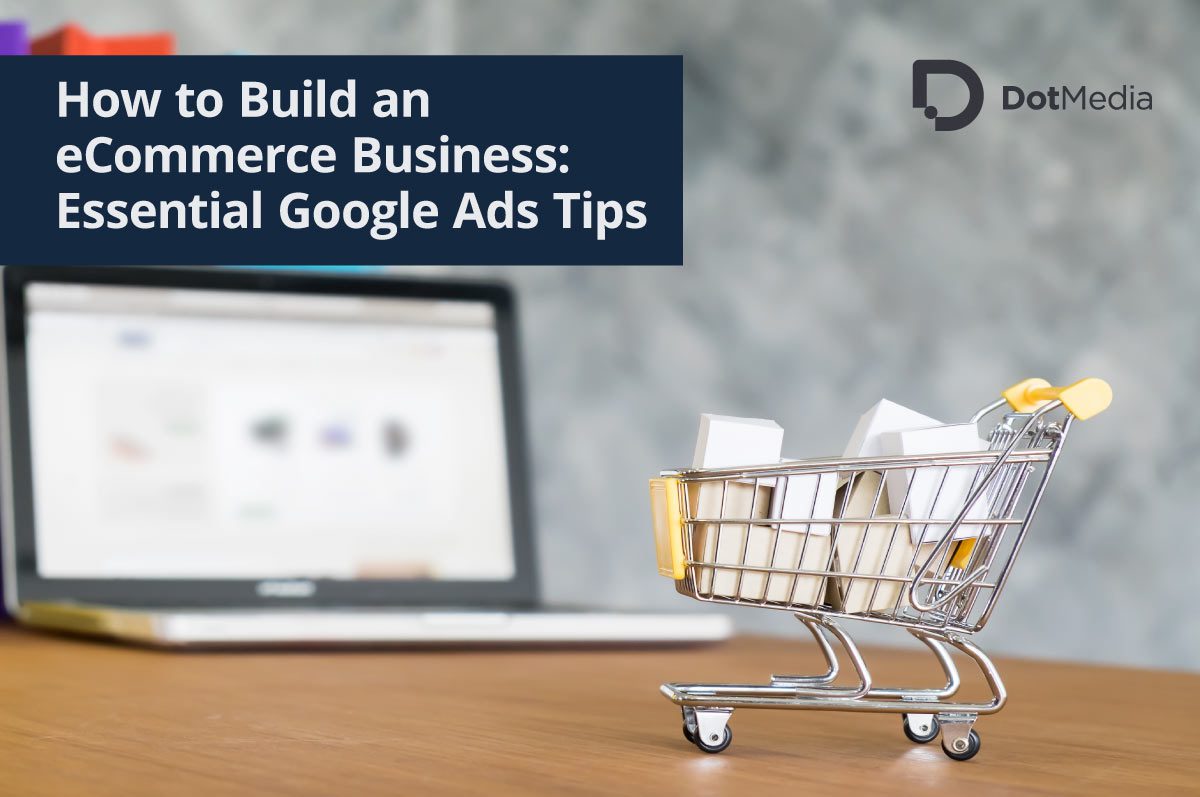How to Build an eCommerce Business: Essential Google Ads Tips
It can be challenging to know where to begin if you’re just starting out with your eCommerce business. Fortunately, plenty of platforms and tools are out there designed to help you launch your business as quickly and efficiently as possible.
Google Ads is one such tool – the advertising platform has become increasingly popular among eCommerce businesses in recent years.
With over 255 million monthly users, Google Ads offers marketing solutions for a range of businesses. But if you’re new to advertising, setting up your first campaign can feel like a steep learning curve. Don’t worry; we’ve got you covered! In this blog post, we explore some essential tips on how to build an eCommerce business on a budget using Google Ads.
Build Brand Awareness with Google Ads
Before diving into the nitty gritty of Google Ads, it’s essential to consider your overarching advertising strategy. Regarding eCommerce, building brand awareness is a crucial objective for business owners. Brand awareness is hugely advantageous for eCommerce businesses because it allows you to build trust in potential customers before they make a purchase.
This means you don’t risk losing sales to ‘buyers remorse’ – a customer purchases an item but then regrets their decision and attempts to return or exchange the product.
Instead, maximising your brand awareness means increasing your reach and engagement with potential customers. Google Ads is an excellent tool for building brand awareness because it allows you to target customers in various locations and demographics.
This means that you don’t just increase your overall reach; you also increase your visibility among a broader customer base. By targeting potential customers in different areas, you make your brand more visible overall, increasing engagement. High engagement rates, in turn, lead to higher sales.
Why is Google Ads Good for Ecommerce?
As we’ve seen, Google Ads offers a wide range of advantages for eCommerce businesses. But why is it such a good choice for eCommerce compared to other advertising platforms?
To answer this question, it’s crucial to understand how Google Ads works. Google Ads allows advertisers to create ad campaigns by selecting targeting options and creating ad copy.
Once your advertising campaign is up and running, the platform uses your ad’s targeting and ad copy to determine where your ad appears on Google’s websites. Google Ads offers a wide range of benefits for eCommerce businesses.
First, it’s highly accessible. Even as a new business, you can use Google Ads to boost your online presence. It’s also highly affordable, which makes it accessible for all types of businesses, regardless of their budget. Your ad campaign can also be highly customisable. This means that you can target your customers based on various factors, including location and demographics.
This, in turn, makes your ad campaign more targeted and therefore, more effective. Google Ads’ advantages don’t stop there. The platform also integrates seamlessly with other Google products, including Google Analytics and Google Search Console, which allows you to track and optimise your ad campaigns more effectively.
Creating your first campaign
If you’re new to Google Ads, the first thing you need to do is create an account. Once you’ve done so, you can start building your first ad campaign. Before you do, you’ll need to determine your budget and define your goal.
Your budget is the amount of money you’re willing to spend on Google Ads each month. You should start with a low budget, as Google Ads optimisation is a long-term process. You want to make sure you don’t overspend and end up out of pocket! Once you’ve determined your budget, you need to decide on your overall goal for the campaign. There are three main goals for Google Ads campaigns:
Sales:
If you want to drive sales, it’s best to focus on your offer. Focus on how your product can benefit your customers, and use your ad copy and landing page to drive people to buy.
Traffic:
To generate traffic, it’s essential to focus on your call to action. Your call to action is the action you want your customers to take, such as visiting your website or signing up for your mailing list.
Brand awareness:
If you want to build brand awareness, you have to focus on your landing page. Your landing page is where your ad leads, so it’s crucial that it’s engaging and shows your brand in the best light.
Define your target audience
Before creating your ad campaign, you need to define your target audience because Google Ads allows you to target customers based on a variety of factors, including location and demographics. You can target customers based on their gender, language, interests, or the websites they visit. One of the most critical factors you can target is location.
This allows you to target customers based on their geographic location. For example, you can target customers in a particular city or county. You can also target customers in different countries. Once you’ve defined your target audience, you can start creating your ad campaign. The first step is to decide on your ad’s ad type. There are two types of ads you can choose from:
Text Ads:
Text ads are great if you want to focus on your product benefits. Text ads are similar to Google search ads, so they can show up near the top of the page when a customer searches for products or services related to your business.
Shopping Ads:
Shopping ads are designed for eCommerce businesses and are displayed at the top of the page. They show products or product categories that are related to your business. Shopping ads are great if you want to focus on driving sales by creating urgency and promoting special offers on specific products.
Set a budget and define your goal
Once you’ve defined your target audience, it’s time to set a budget. The budget is the maximum amount of money you’re willing to spend on Google Ads each month. It’s important to note that you shouldn’t spend all of your budgets in one go. You need to create a budget that you can sustain for several months.
This way, you can monitor how well your ad campaigns are performing and make necessary adjustments to improve performance. Once you’ve determined your budget, you need to decide on your goal. There are three main goals for Google Ads campaigns:
Optimise your ad copy and landing page
Once you’ve created your ad campaign, it’s time to optimise your ad copy and landing page. To do this, you have to continue monitoring your Google Ads campaign. This allows you to identify areas that need improvement and make adjustments accordingly. You can do this using Google Ads’ metrics and reporting features.
Once you’ve identified areas that need improvement, you can adjust your ad copy and landing page. For example, you can change your ad copy to address a problem that your potential customers are facing and your landing page to create a more engaging experience. As you continue monitoring your Google Ads campaign, you’ll see your engagement rates grow, ultimately leading to higher sales.
Wrapping up – Essential Google Ads Tips: How to Build an Ecommerce Business on a Budget
Google Ads is a powerful tool for eCommerce businesses. It allows you to target customers based on various factors, which makes your ad campaign highly targeted.
This, in turn, leads to higher engagement rates and more sales. Google Ads is an affordable advertising tool accessible to all types of businesses, regardless of their budget. Once you’ve created your ad campaign, it’s important to optimise your ad copy and landing page. This will help you improve performance and increase the number of sales generated by your Google Ads campaign.
Contact Dot Media today if you’d like to discuss your Google Ads campaigns or like us to manage your existing campaigns. We manage over £10,000 in ad spend per month and have achieved over 10 ‘Conversation value cost’ for our clients (for every £1 spent, £10 back in revenue/sales).





